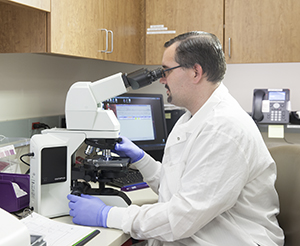When Your Child Has Hematuria: Urologic Causes
When Your Child Has Hematuria: Urologic Causes

There are two types of hematuria:
Gross hematuria means that blood can be seen when looking at the urine with the naked eye. The urine may look pinkish, brownish, or bright red.
Microscopic hematuria means that the urine appears clear, but blood cells can be seen when the urine is looked at under a microscope.
Both types may indicate a problem somewhere in the body. But one is not more serious than the other.
What are the possible causes of hematuria?
Runs in a family
Bladder or kidney infection
Recent “strep” (streptococcal) infection
Certain medicines
Vigorous exercise
Damage to the urinary tract or catheter use
Kidney stones
Blockage in the urinary tract
Diseases, such as sickle cell anemia
Kidney disease
How is hematuria diagnosed?
Your healthcare provider will ask you questions about your child’s health. A physical exam will also be done to look for problems. One or more of the following tests may be done to find the cause of your child’s hematuria:
Urinalysis to examine the urine for blood or other problems
Blood tests to look for infection or kidney disease
Kidney and bladder ultrasound to create images of the kidney and bladder using sound waves
A KUB (kidney, ureter, bladder) X-ray to determine if kidney stones or another problem is present
CT (computed tomography) scan to give the health care provider a more detailed image of the kidney and bladder than a regular X-ray
Voiding cystourethrogram (VCUG) X-ray to show if reflux (backward flow of urine) is present and how the bladder and urethra function, especially during urination
Cystoscopy to see inside the urethra and bladder, using a small scope with a camera attached at the end
How is hematuria treated?
Treatment depends on what’s causing the bleeding. Your child’s healthcare provider will tell you more after the exact cause is determined.
Updated:
February 10, 2018
Reviewed By:
Image reviewed by StayWell art team.,MMI board-certified, academically affiliated clinician,Sather, Rita, RN